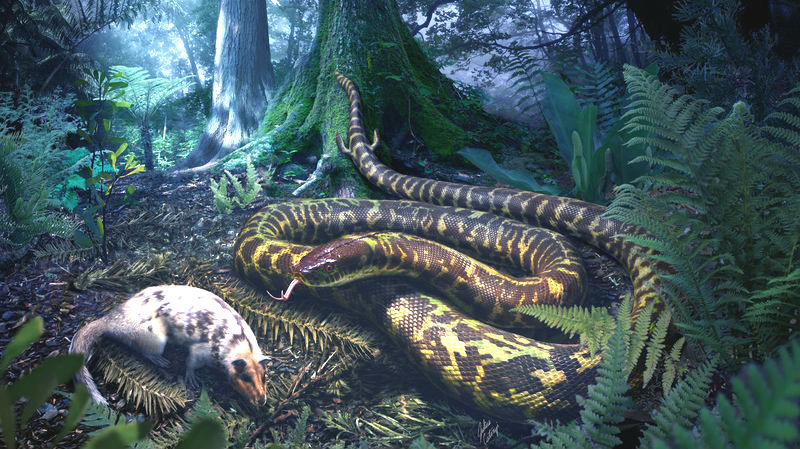Many seem to think that once the era of the dinosaurs had passed there simply weren’t that many large species of reptiles roaming about; the evidence it seems, tells a very different story. Even after most of the dinosaurs were gone, a mega-sized species of snake still roamed the swamps and jungles of Columbia. We’re speaking of course about the infamous Titanoboa, which is basically a city bus-sized snake that resembles a modern-day boa constrictor. Its name is rather fitting, being a mash-up of “titanic” and “boa” after all. Many scientists now actually believe that this enormous snake was actually the largest non-marine animal on Earth at one point.
Don’t get the wrong idea though; scientists think the Titanoboa behaves more like an Amazonian anaconda, mercilessly hunting down even large mammalian prey. So, just why were these prehistoric snakes so incredibly large, you ask? According to conventional thinking, the area where this monster resided in was not only gifted with incredibly dense and diverse vegetation, it also featured quite a lot of rainfall as well. Naturally, where ever there is an abundance of plant life, you’re sure to see many different species of animal there as well. Fast-forward and you’ll see populations of small-to-large creatures attracting even larger predators like the Titanoboa. Moreover, you tend to see larger predators evolving in warmer climates as opposed to colder ones.
Just how big was the average Titanoboa? If you can imagine it, try to picture a dark snake at least 48 feet in length and weighing in at over 2,500 pounds. As previously mentioned, this particular species of prehistoric snake is longer than your average city bus! Furthermore, if you were to simply stand beside such a creature, the height of its trunk (while lying flat on the ground of course) would likely reach your mid section (if you’re fairly tall) or even one’s shoulders (if you happen to be on the shorter side).
Aside from discovering the T-rex, many think that the unearthing of the Titanoboa is one of the more significant archeological findings ever. We are after all, talking about a creature that lived 60–58 million years ago, during the Paleocene epoch and was very likely an aggressive predator which was to be feared by most other animals.
If you want to learn more about the Titanoboa, check out this informative and educational video from the Smithsonian Channel …and/or if you’re in the mood for more of a fictitious rendering of what it might be like to actually encounter a snake like the Titanoboa, check out this fairly well-known, but critically maligned movie.

